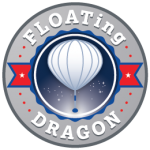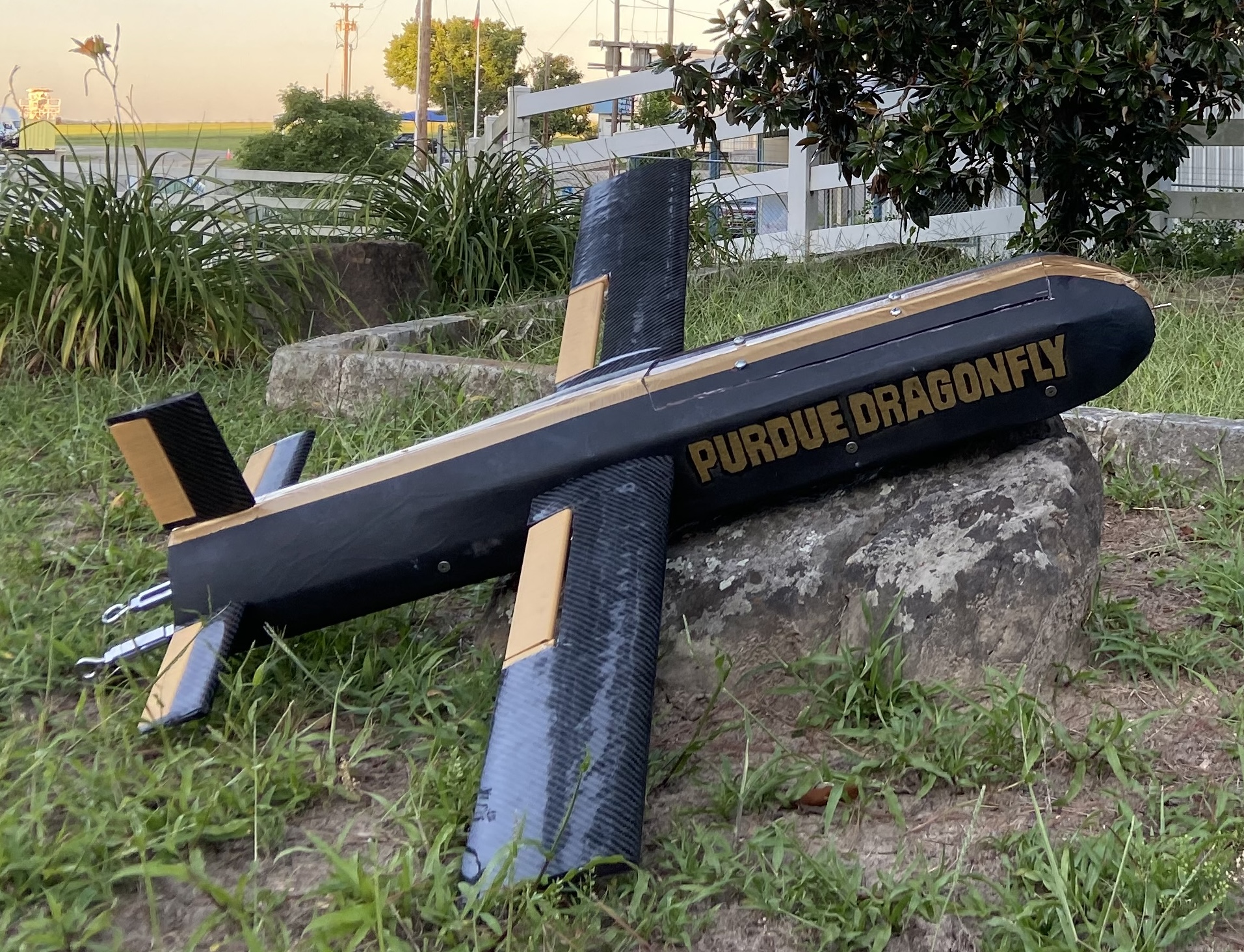-
FLOATing DRAGON Notice of Intent Submitted
September 15, 2022 - West Lafayette, IN
Purdue Dragonfly team submits notice of intent for the FLOATing DRAGON competition. The team consists of 6 team students in the AAE418 class.
-
Critical Design Review
January 8, 2023 - West Lafayette, IN
The Dragonfly Critical Design Review was submitted to NASA for review. This consisted of a written report and video detailing the vehicle concept and how it would satisfy NASA's requirements.
A link to the PDR can be found here. A link to the CDR can be found here.
The team was selected as one of the six finalist teams on January 30th, 2023.
-
Software Design Review
July 14, 2023 - Video Conference
A month before flight, the software design review was held over a video call with NASA. The Dragonfly team presented test cases using sample sounding files to prove the control systems and waypoint planning algorithm would be successful.
-
Flight Readiness Review and Integration
August 11, 2023 - Fort Sumner, NM
Four team members traveled to Ft. Sumner, NM with the Dragonfly to complete final tests with the BPO and integrating the deployment system into the NASA gondola.
-
Balloon Flight Carrying Dragonfly
August 19, 2023 - Fort Sumner, NM
Although the FAA denied the nodes to be dropped, NASA allowed for the nodes to be carried with the gondola as planned. The flight, which the BPO referred to as the Salter Test Flight, landed 122 Nm southwest of the launch site.
More information about the test flight can be found here.
-
ICE-DRAGON Notice of Intent Submitted
November 6, 2023 - West Lafayette, IN
Purdue Dragonfly team submits notice of intent to participate in the ICE-DRAGON challenge. Teams from Notre Dame, Princeton, and UT Austin also submit notice of intents.
-
Team begins design of Dragonfly V2
January 9, 2024 - West Lafayette, IN
With the beginning of the Spring 2024 semester, a new team was formed to create the second Dragonfly vehicle. Work began on the design, analysis, and manufacturing of the vehicle in the second week of the semester.
-
Ice Dragon CONOPS
April 2024 - Zoom Call
The Purdue Dragonfly team presented a concept of operations for the Dragonfly V2 vehicle to NASA and were approved to move forwards.
-
Ice Dragon Pre-Integration Review
June 2024 - Zoom Call
The Purdue Dragonfly team presented the manufacturing progress and modes of failure for the Dragonfly V2 vehicle to NASA and were approved to move forwards with integration.
-
Flight Readiness and Integration
June 24, 2024 - Palestine, TX
The team travelled to Palestine, TX to perform a drop test and integrate the Dragonfly into the NASA gondola system. The drop test was passed and the vehicle was passed to NASA to bring to Antarctica.
-
ICE-DRAGON Flight
December 2024 - Antarctica
In Antarctica, a deployment actuator failed and a control surface came loose from its torque rod. The vehicle was not able to be repaired before the SALTER mission launch on Dec 22nd, 2024.

